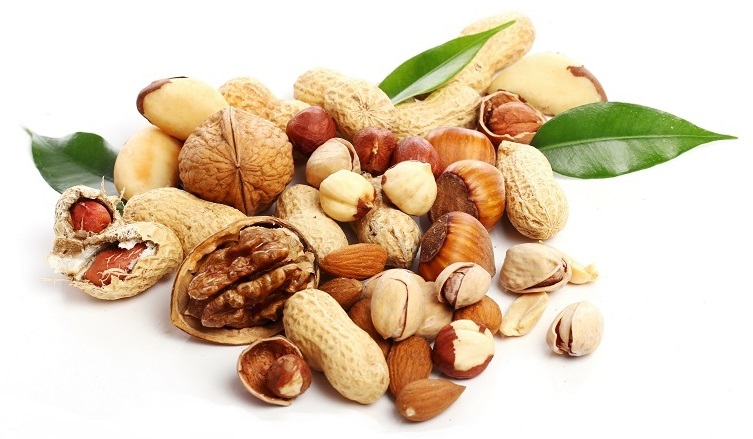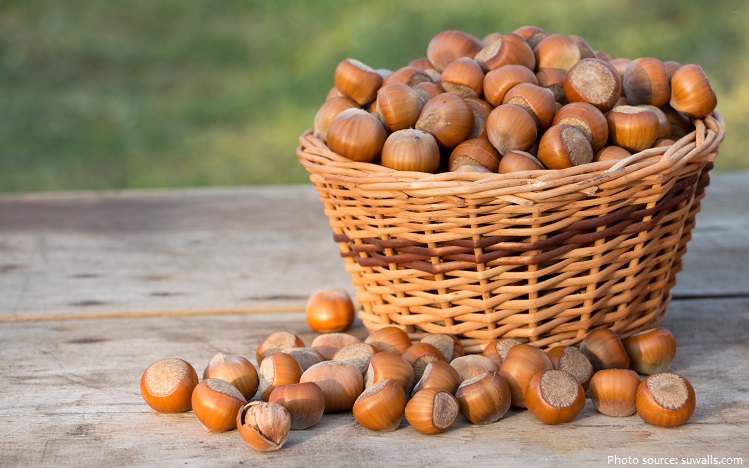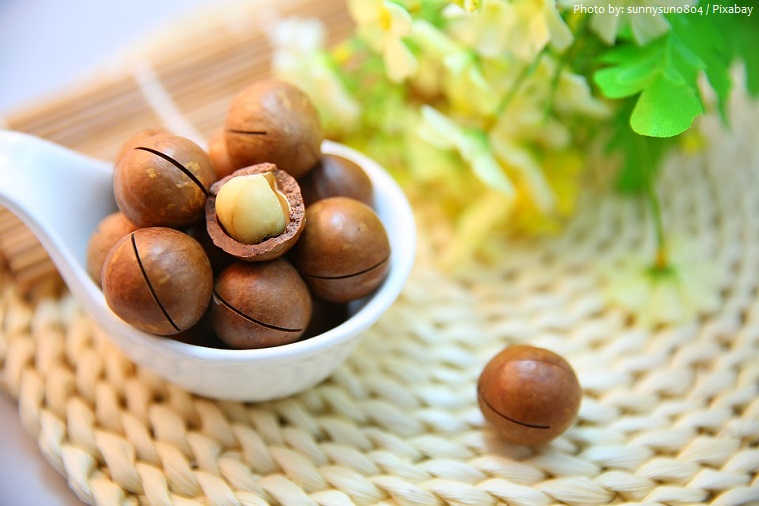A nut is a fruit composed of an inedible hard shell and a seed, which is generally edible.
Most seeds come from fruits that naturally free themselves from the shell, unlike nuts such as hazelnuts, chestnuts, and acorns, which have hard shell walls and originate from a compound ovary.
The general and original usage of the term is less restrictive, and many nuts (in the culinary sense), such as almonds, pecans, pistachios, walnuts, and Brazil nuts, are not nuts in a botanical sense.
The translation of “nut” in certain languages frequently requires paraphrases, as the word is ambiguous.
From prehistoric man to ancient royalty to medieval peasants to supermarket shoppers of today, nuts have been a reliable food source throughout history.
Recently there was an archeological dig in Israel where researchers found evidence showing that nuts formed a major part of man’s diet 780,000 years ago. Seven varieties of nuts along with stone tools to crack open the nuts were found buried deep in a bog. The nuts were wild almond, prickly water lily, water chestnut and 2 varieties of both acorns and pistachios.
A dig in Iraq uncovered evidence of nut consumption that dates back to 50,000 BC, and in Texas, pecan shells were unearthed near human artifacts that may date back to 6,000 BC.
Historians say that almonds, mentioned in the Old Testament of the Bible, were among the earliest cultivated foods. The almond has been found in excavation sites in both Cyprus and Greece.
Because nuts generally have a high oil content, they are a highly prized food and energy source. They are good sources of fat, fiber and protein.
They’re tasty, convenient, and can be enjoyed on all kinds of diets — from keto to vegan.
Walnuts have always been considered as “Brain Food”, perhaps because the surface structure of the walnut has a crinkly appearance like that of the brain. Due to this reason, they have been considered as a symbol of intelligence, leading to the belief that they actually increase one’s intellect. While this is not exactly true, recent studies have proven that the consumption of these seeds does help in promoting brain function.
The pollination of California’s almonds is the largest annual managed pollination event in the world, with close to one million hives (nearly half of all beehives in the US) being trucked in February to the almond groves. Much of the pollination is managed by pollination brokers, who contract with migratory beekeepers from at least 49 states for the event.
Hazelnuts are used in confections to make pralines, chocolate truffles, hazelnut paste products and combination with chocolate.
Ferrero SpA, the maker of Nutella and Ferrero Rocher, uses 25% of the global supply of hazelnuts. The hazelnuts used in Nutella originate from Turkey and Italy, grown mainly by small holders.
It takes about 540 peanuts to make a 12-ounce (340-gram) jar of peanut butter. That’s approximately 45 peanuts per ounce (28 grams) of peanut butter.
Half of the top ten selling candy bars in the US contain peanut or peanut butter.
There are about 78 pecans used in every pecan pie!
Macadamia nuts are the most expensive nuts in the world, at $25 per pound (0.45 kilogram).
George Washington Carver began his research into peanuts in 1903 at Tuskeegee Institute. Research that would lead him to discover improvements in horticulture and the development of more than 300 uses for peanuts (which, contrary to popular belief, did not include peanut butter, but did include salted peanuts).
The name “pecan” is a Native American word of Algonquin origin that was used to describe “all nuts requiring a stone to crack.”
The Pistachio Principle is a simple, mindful eating concept that can help fool yourself full, without feelings of deprivation. The premise of The Pistachio Principle is that consumption of in-shell pistachios may help to slow eating because the leftover shells offer a visual cue about the amount of pistachios you’ve consumed. And that can potentially reduce your calorie intake.
The “Brazil nut effect” describes the tendency of the larger items to rise to the top of a mixture of items of various sizes but similar densities, such as brazil nuts mixed with peanuts.






